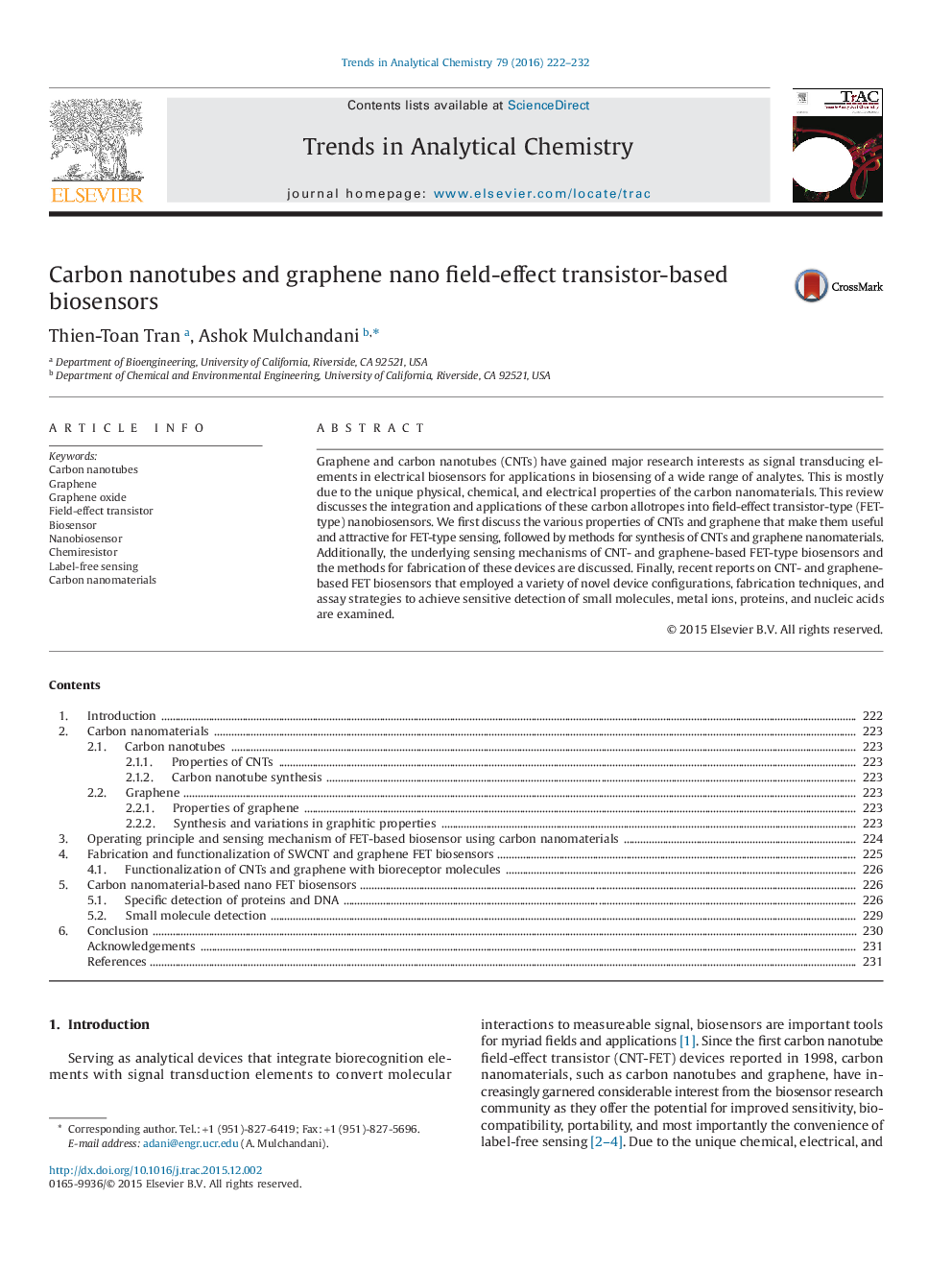| Article ID | Journal | Published Year | Pages | File Type |
|---|---|---|---|---|
| 1248093 | TrAC Trends in Analytical Chemistry | 2016 | 11 Pages |
•Graphene/carbon nanotubes (CNM) synthesis and properties are discussed.•Discussion of CNM nano-field effect transistor (nFET) biosensing mechanisms.•Fabrication of nFET biosensors from C.NM is presented.•Examples of label-free sensing applications using CNM nFET biosensors are reviewed.
Graphene and carbon nanotubes (CNTs) have gained major research interests as signal transducing elements in electrical biosensors for applications in biosensing of a wide range of analytes. This is mostly due to the unique physical, chemical, and electrical properties of the carbon nanomaterials. This review discusses the integration and applications of these carbon allotropes into field-effect transistor-type (FET-type) nanobiosensors. We first discuss the various properties of CNTs and graphene that make them useful and attractive for FET-type sensing, followed by methods for synthesis of CNTs and graphene nanomaterials. Additionally, the underlying sensing mechanisms of CNT- and graphene-based FET-type biosensors and the methods for fabrication of these devices are discussed. Finally, recent reports on CNT- and graphene-based FET biosensors that employed a variety of novel device configurations, fabrication techniques, and assay strategies to achieve sensitive detection of small molecules, metal ions, proteins, and nucleic acids are examined.
